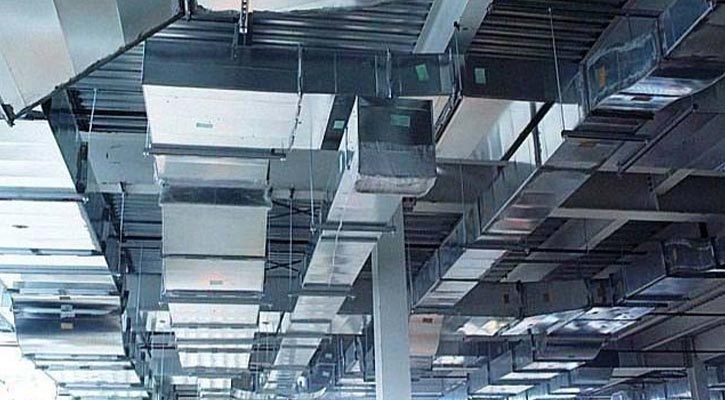In the HVAC industry, accurate estimations and material planning are crucial for project success. One essential aspect of this planning is duct takeoff services. These services help contractors determine the precise quantity of ductwork materials needed for a project, ensuring cost efficiency and reducing material waste.
This guide will cover everything you need to know about duct takeoff services, including their benefits, how they work, and how to choose the right service provider.
What Are Duct Takeoff Services?
Duct takeoff services involve the process of analyzing HVAC blueprints or digital drawings to estimate the required quantities of duct materials, such as:
- Sheet metal ducts
- Flexible ducts
- Duct fittings (elbows, reducers, etc.)
- Insulation materials
- Dampers and registers
These estimates help contractors prepare accurate bids and streamline procurement processes, ensuring smooth project execution.
Why Are Duct Takeoff Services Important?
1. Accuracy in Material Estimation
Manual estimation often leads to errors, causing material shortages or excess. Duct takeoff services use specialized software to generate precise calculations, reducing costly mistakes.
2. Cost Efficiency
Accurate takeoffs help in ordering only the necessary materials, preventing overspending and minimizing waste.
3. Time-Saving
Takeoff services eliminate the need for manual calculations, allowing contractors to focus on project management and execution.
4. Competitive Bidding
With precise estimates, contractors can submit well-calculated bids, improving their chances of winning contracts while maintaining profitability.
5. Project Planning & Scheduling
Having a detailed takeoff report allows for better scheduling, ensuring that the right materials arrive at the site when needed.
How Do Duct Takeoff Services Work?
Duct takeoff services typically follow these steps:
Step 1: Gathering Project Information
Contractors provide blueprints, drawings, or digital files (AutoCAD, PDF, etc.) to the takeoff service provider.
Step 2: Quantity Takeoff Using Software
Specialized software such as PlanSwift, FastDUCT, or Bluebeam Revu is used to analyze the drawings and determine material quantities.
Step 3: Generating a Detailed Report
The service provider compiles a report outlining:
- Total linear footage of ductwork
- Sizes and specifications of ducts and fittings
- Required insulation and accessories
- Estimated material costs
Step 4: Review & Adjustments
Contractors review the takeoff report and make any necessary adjustments before finalizing material orders.
Types of Duct Takeoff Services
There are various types of takeoff services available, depending on project requirements:
1. Manual Takeoff Services
Performed by HVAC estimators using physical blueprints and manual calculations. While accurate, this method is time-consuming.
2. Digital Takeoff Services
Utilizes software to extract measurements from digital plans, providing faster and more accurate results.
3. Automated Takeoff Services
Advanced AI-powered software can generate takeoff reports with minimal human input, significantly reducing turnaround times.
Choosing the Right Duct Takeoff Service Provider
When selecting a duct takeoff service provider, consider the following factors:
1. Experience & Expertise
Look for companies with a proven track record in HVAC estimations and ductwork takeoffs.
2. Software & Tools Used
Ensure the provider uses reliable and industry-standard takeoff software.
3. Turnaround Time
Projects often work under tight deadlines. Choose a service that offers fast and accurate results.
4. Cost & Pricing Structure
Compare pricing options and ensure there are no hidden fees.
5. Customer Support & Communication
A responsive service provider can assist with queries and modifications as needed.
Benefits of Outsourcing Duct Takeoff Services
Many contractors opt to outsource their duct takeoff needs instead of handling them in-house. Here’s why:
- Reduces workload – Frees up time for project management and execution.
- Access to expertise – Professional estimators ensure higher accuracy.
- Cost savings – Avoids the need for expensive software and training.
- Scalability – Easily handle multiple projects without overburdening staff.
Common Challenges in Duct Takeoff Services
While duct takeoff services are beneficial, there are some challenges to consider:
1. Blueprint Complexity
Detailed and complex blueprints may require experienced estimators to interpret correctly.
2. Inaccurate Drawings
Old or incorrect drawings can lead to inaccurate estimates, affecting material orders.
3. Software Limitations
Some software may not account for special project requirements, requiring manual adjustments.
Conclusion
Duct takeoff services are essential for HVAC contractors looking to improve accuracy, efficiency, and cost-effectiveness in their projects. By leveraging advanced software and professional expertise, contractors can streamline their bidding, procurement, and installation processes.
Whether you choose to handle takeoffs in-house or outsource them, investing in accurate duct estimation is a strategic move that can significantly impact your project's success.
Have you used duct takeoff services before? Share your experience in the comments!


